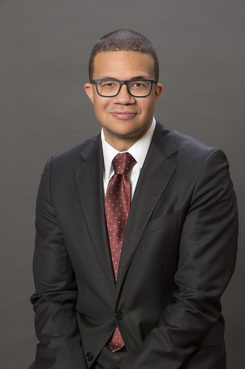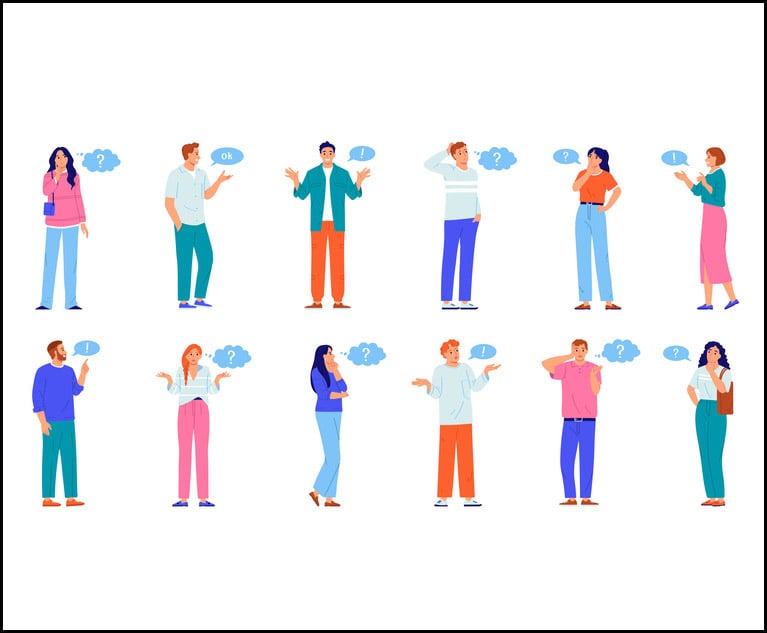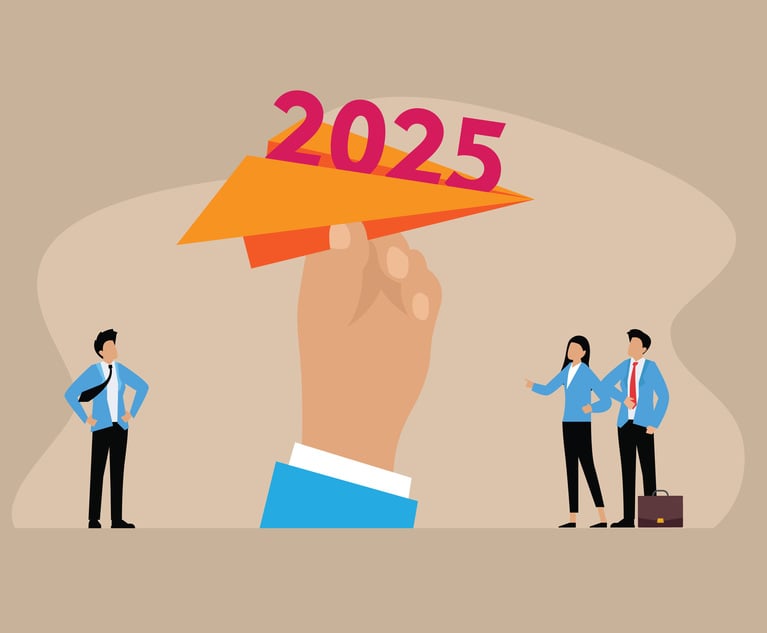Young Attorneys in Litigation—Direct and Cross-Examination
TV shows such as "Law and Order," "The Practice," "Suits" and countless other lawyer shows have embedded legal folklore of dramatic opening statements and surprising closing arguments as the key to winning cases.
September 12, 2018 at 02:52 PM
10 minute read
 Raphael Castro of Pond Lehocky Stern Giordano
Raphael Castro of Pond Lehocky Stern Giordano
TV shows such as “Law and Order,” “The Practice,” “Suits” and countless other lawyer shows have embedded legal folklore of dramatic opening statements and surprising closing arguments as the key to winning cases.
These bookends of trial are absolutely important since they are the first and last opportunities a young lawyer will have to make an impression—to persuade the jury or judge. However, generally these summations are not even considered evidence to prove one's case.
Direct and cross-examinations are what wins and loses cases for our clients. We often fail to recognize the importance of what is caught in the middle of a 60-minute episode: direct and cross-examinations.
In preparing your next direct or cross, here are important takeaways and points as a young lawyer for your next case.
Direct Examination: Tell the Witness' Story
I find that direct examinations are more difficult than cross because you allow the witness to tell their story.
Your role is limited because the witness testifies, not you. The witness is the star of the show, and the fact finder must hear their story in a clear and convincing way. This is an opportunity to make your case come alive through effective direct examination of your client, fact witness or expert. Conversely, it may present an opportunity for your case to go off the rails unplanned and then you have to explain to your supervisor or partner what happened.
How can a young litigator sidestep these pitfalls?
Direct examination questions begins simply with open-ended questions of who, what, why, where and how. These questions are meant to be simple, organized and concise. Your witness will also easily understand what you are asking them, and the judge or jury will easily understand their answer.
In order to be effective on direct examination, one must command the facts and prepare. Study what elements you need to prove. The statute or jury instructions will be the road map of the entire case. They tell you what the parties have to prove as a burden of proof, what the defenses are, and whether you stand a chance of winning or not.
Preparing Your Witness on Direct
The single most important aspect of having a successful direct examination is preparation. Oftentimes, you will be under the pressure of time and sometimes meet the witness for the first time they are testifying. You allay their fears by let them them know you are committed in getting the right result.
Tell every client that they are the expert in their case because it's true. The fact finder only wants to know the truth under oath. The truth is powerful and easy to remember because it happened. It's important that they know it's okay to ask for clarification if they don't understand a question. If they answer without understanding the question, this will make it difficult for them to claim ignorance if they later change their story.
Go through the questions until the witness feels comfortable responding to them, but not so much that they have memorized or scripted the answers. If possible, let the witness sit in the courtroom before testimony, or explain to them in detail what they can expect when they are sworn in or how to communicate their answers to the jury. If a witness is presenting in court, make sure their body language, tone, pitch, pace, movement and gestures are forthcoming.
Use pictures, video, and other visual presentations to heighten interest, clarify facts, and promote acceptance of your side of the story. Always remember most communication is nonverbal.
The witness must be aware of their role in the case, and a young litigator must reasonably expect what they will say. The deposition or trial cannot be the forum where your client, fact witness, or expert see documents for the first time. During preparation, it is essential to tell them the purpose or theme of their testimony.
It is through your witnesses that you prove your case, so make sure you know what to ask them to elicit the information to meet your burden. Likewise, know what the other side needs to prove and use your witnesses to undermine their case. Don't call a witness just because you can. If a witness is going to do nothing more than corroborate another witness, narrow the scope of your questioning to narrow the forthcoming cross.
Executing Your Direct Examination
The overwhelming amounts of cases at the trial level are decided on credibility. Witnesses must not only tell the truth, but also appear to be telling the truth. This gives us an opportunity as lawyers to facilitate the perception that the witness' account is honest.
You can't change facts. Sometimes, you're most important job is to uncover all the facts, good and bad, and advise the client of the possible outcome.
Just because you rehearsed the questions, and the witness answered them during preparation, doesn't not mean they will respond the same way during a deposition or trial. Listen to the answers, and do not become too attached to your outline. Actively pay attention to the actual responses given.
For example, if a client only tells you on direct that she suffered a head injury from a motor vehicle accident, keep peeling off the layers: Did any part of your body hit the vehicle? How fast were you traveling? Was it daytime when the accident happened? Other than your head, what other injuries did you sustain? Were your airbags deployed? Who else was present? How did you arrive to the hospital? These are the type of questions that will color a more vivid painting.
Wait two full seconds before answering every question, even the most basic questions. This allows the witness to control the pace. This also allows the court reporter to type down everything that is said. Other than the fact finder, the court reporter is arguably the second-most important. That perfect direct or cross you executed didn't happen unless everything was typed down. Having a clear record during depositions allows judges to read exactly what happened, and allow losers of the battle during the trial to win the war at the appellate level.
Be careful with re-direct. Use it to rehabilitate or introduce something necessary not brought up during direct. Re-direct can be dangerous because it can open the door, and permit re-cross that allows a second chance for your opponent to hurt your client and witness.
Include the question in every answer. This ensures the witness only answers the questions to the extent she feels comfortable. Advise the witness to only answer the question being asked when they are being crossed. Being sincere and short, especially when an examiner may be abusive, is best practice.
With respect to experts, they can be a great help the fact finder with necessary information to understand the details within their technical field. It is critical that the expert must be cognizant that direct testimony must be instructive, simple, and noncondescending.
There is often one element or a specific issue that will be asked over and over again to get the desired admission. The response is in a pleasant manner, “I apologize. I must not be communicating well. My answer is …” and then provide the same answer.
Cross-Examination: Discredit and Elicit Supporting Facts
The keys to an effective cross-examination are leading questions, accurate word choice, one fact per question, maintain control of the witness, get clear direct answers to your questions, with starting strong and ending strong. On cross-examination, the focus is on you.
Start your questioning with the witness' bias is often effective. That will color the rest of their testimony. You could also start with the last thing the witness said on direct to make a strong showing that they were wrong.
“You're an orthopedic surgeon.” “Yes.” You treated Mr. Smith.” “Yes.” “At the request of the insurance company.” “Yes.” And you charged $1,000 for that examination.” “Yes.” “An examination which took 10 minutes.” “Yes.” The more that the fact finder hears the witness saying “yes” to your questions, the more the jurors will perceive that the witness is agreeing with you and with your position. Avoid questions that allow the witness to provide a long explanation and take control. The reason you're having the witness say so little is that you're testifying, not the witness.
When asking leading questions, you want to ask questions that require only a “yes” answer. You want the witness to agree with you and say “yes” to your questions as many times as possible. You want the judge or jury to read or hear the witness agreeing with you time and time again.
Avoid using the words “correct” “isn't that so” or “right” at the end of your questions. These words detract from the power of your cross-examination, and if used at the end of every question it becomes distracting and downright annoying.
When you are listening to lay witnesses during direct, visualize their personal weakness. They may be easily riled up or volunteer too many answers. Then attack their testimony, lack of corroboration or dispute established facts.
Expert Witnesses and Cross-Examination
With experts, I typically find that you will not outsmart them. Do not find yourself in an endless back and forth since experts will most likely not have an epiphany and change their opinion rendered because of your cross. Generally, keep it short and pick out the points on which you are confident you can win. The goal is to damage their credibility, contradict present testimony, and bolster some of the elements of your own case. Attack their qualifications, data/information provided to them as incomplete or inaccurate or their limited ability to observe.
When the other side starts objecting during a deposition, you've tripped over something. When he starts making speaking objections, you've hit pay dirt. Keep digging.
Don't ask the ultimate question. Typically asking someone on the stand “Why?” will allow a self-serving speech that you cannot interrupt and that it will generally hurt your case. Ask all the lead questions that take you to the brink of the ultimate question and save it for the brief or closing arguments.
Lights. Camera. Action.
Depositions are an exercise in truth seeking and truth telling. Study witnesses and watch their body language, cadence, and diction. Use a theme to provide a context into how the jury or judge may understand and place the facts. Stories enhance recall, and encourage empathy and believability.
As young lawyers, there will be a moment when everything finally clicks for you. You won't notice it at first. Between juggling cases and your life, you won't notice how your questions in the deposition or during trial come with greater ease and fluidity.
The long pauses and insecurities give way to excitement. The butterflies stop about being concerned for what's about to happen, and rather in anticipation about what you will accomplish. If you haven't achieved that moment yet, you will. Give it time. Now go binge “How To Get Away With Murder” and “Better Call Saul.”
Raphael F. Castro, an associate at Pond Lehocky Stern Giordano, is a workers' compensation attorney. He earned his law degree from Widener University School of Law, graduating in 2014.
This content has been archived. It is available through our partners, LexisNexis® and Bloomberg Law.
To view this content, please continue to their sites.
Not a Lexis Subscriber?
Subscribe Now
Not a Bloomberg Law Subscriber?
Subscribe Now
NOT FOR REPRINT
© 2025 ALM Global, LLC, All Rights Reserved. Request academic re-use from www.copyright.com. All other uses, submit a request to [email protected]. For more information visit Asset & Logo Licensing.
You Might Like
View All


From Courtroom to Cradle: Practical Advice for Young Attorneys About Parental Leave
7 minute read
Trending Stories
- 1Trump's DOJ Delays Releasing Jan. 6 FBI Agents List Under Consent Order
- 2Securities Report Says That 2024 Settlements Passed a Total of $5.2B
- 3'Intrusive' Parental Supervision Orders Are Illegal, NY Appeals Court Says
- 4Federal Laws Also Preempt State's Swipe Fee Law on Out-of-State Banks, Judge Rules
- 5Judge Grills DOJ on Trump’s Birthright Citizenship Executive Order
Who Got The Work
J. Brugh Lower of Gibbons has entered an appearance for industrial equipment supplier Devco Corporation in a pending trademark infringement lawsuit. The suit, accusing the defendant of selling knock-off Graco products, was filed Dec. 18 in New Jersey District Court by Rivkin Radler on behalf of Graco Inc. and Graco Minnesota. The case, assigned to U.S. District Judge Zahid N. Quraishi, is 3:24-cv-11294, Graco Inc. et al v. Devco Corporation.
Who Got The Work
Rebecca Maller-Stein and Kent A. Yalowitz of Arnold & Porter Kaye Scholer have entered their appearances for Hanaco Venture Capital and its executives, Lior Prosor and David Frankel, in a pending securities lawsuit. The action, filed on Dec. 24 in New York Southern District Court by Zell, Aron & Co. on behalf of Goldeneye Advisors, accuses the defendants of negligently and fraudulently managing the plaintiff's $1 million investment. The case, assigned to U.S. District Judge Vernon S. Broderick, is 1:24-cv-09918, Goldeneye Advisors, LLC v. Hanaco Venture Capital, Ltd. et al.
Who Got The Work
Attorneys from A&O Shearman has stepped in as defense counsel for Toronto-Dominion Bank and other defendants in a pending securities class action. The suit, filed Dec. 11 in New York Southern District Court by Bleichmar Fonti & Auld, accuses the defendants of concealing the bank's 'pervasive' deficiencies in regards to its compliance with the Bank Secrecy Act and the quality of its anti-money laundering controls. The case, assigned to U.S. District Judge Arun Subramanian, is 1:24-cv-09445, Gonzalez v. The Toronto-Dominion Bank et al.
Who Got The Work
Crown Castle International, a Pennsylvania company providing shared communications infrastructure, has turned to Luke D. Wolf of Gordon Rees Scully Mansukhani to fend off a pending breach-of-contract lawsuit. The court action, filed Nov. 25 in Michigan Eastern District Court by Hooper Hathaway PC on behalf of The Town Residences LLC, accuses Crown Castle of failing to transfer approximately $30,000 in utility payments from T-Mobile in breach of a roof-top lease and assignment agreement. The case, assigned to U.S. District Judge Susan K. Declercq, is 2:24-cv-13131, The Town Residences LLC v. T-Mobile US, Inc. et al.
Who Got The Work
Wilfred P. Coronato and Daniel M. Schwartz of McCarter & English have stepped in as defense counsel to Electrolux Home Products Inc. in a pending product liability lawsuit. The court action, filed Nov. 26 in New York Eastern District Court by Poulos Lopiccolo PC and Nagel Rice LLP on behalf of David Stern, alleges that the defendant's refrigerators’ drawers and shelving repeatedly break and fall apart within months after purchase. The case, assigned to U.S. District Judge Joan M. Azrack, is 2:24-cv-08204, Stern v. Electrolux Home Products, Inc.
Featured Firms
Law Offices of Gary Martin Hays & Associates, P.C.
(470) 294-1674
Law Offices of Mark E. Salomone
(857) 444-6468
Smith & Hassler
(713) 739-1250





